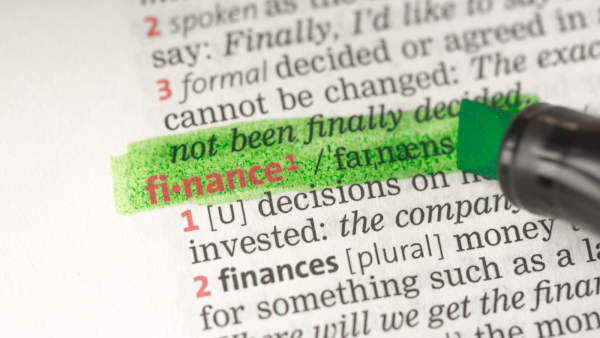What is Green Finance and Why it Matters
January 24, 2022
Green Financing, as defined by the UN Environment Programme, “is to increase the level of financial flows (from banking, micro-credit, insurance, and investment) from the public, private and not-for-profit sectors to sustainable development priorities” (UNEP). Green Finance for many years was only a small niche of the investment world; however, now it is taking both the public and private sectors by storm.
It is important to recognize that the ideals on which Green Finance operates are not anything new. There have always been people who believed in investment that focused on more than simply returns. Credit unions, rural cooperatives, and many philanthropic groups were using sustainable investment principles far before anyone was using the term “Green Finance” (Weber, 2012). Nevertheless, the world of Green Finance today is far larger and more diverse than anything seen in history. The industry is made up of many stakeholders all of which play a critical role in raising and using capital in sustainable projects.
Now, to qualify a project as “green” or “sustainable” is a task that each entity must decide for themselves. There have been standards set by the United Nations and other organizations like the CERES principles that try to identify qualities to look for in Green Finance when evaluating projects or companies. There are also organizations that help to identify companies and score them for ESG (Environmental, Social, and Governance) or socially responsible investors like Sustainalytics or MSCI. Each investor, firm, and government must decide for themselves what fits their goals. This is where the need for metrics and standardization becomes important.
There is the public sector of Green Finance which is composed of governmental identities that create incentives like subsidies or take on projects of their own like public transport or water management using bonds for funding. They can also work with the private sector using Green Banks. Green Banks, which can be established in numerous forms, set sustainable goals and then achieve these by leveraging large amounts of private capital using relatively small amounts of public money. Green Banks use multiple financial tools to do this such as credit enhancements and loan programs and then expect to be paid back. With proper management, green banks can have a dramatic environmental impact as well as be revenue positive (Weiss and Konschnik, 2018). Often, projects taken on by the public sector are ones that the private sector will not provide adequate financing for due to either a lack of adequate ROI or too much risk.
The private sector is composed of private firms such as banks, private equity firms, and companies. Private financial firms provide capital for their own projects. The transition to sustainable projects is caused mainly by 2 factors. The first being clients for these firms are demanding a change. Karen Karniol-Tambour, co-chief investment officer for Bridgewater Associates’ new sustainable investing venture told the New York Times that “Every day we hear from a different client who we didn’t think would be into [sustainable investing], now they are saying, ‘It’s part of my mandate’” (Rendleman). The second factor causing this transition is the rise in the value of sustainable investments. Now, whether these investments are really outperforming traditional ones is a matter of great debate (Bruno, et al.). Nevertheless, firms understand the momentum that has been created by this movement and it has certainly been shown that Green Finance can still bring modest returns to investors.
Green Finance is a rather complex idea to describe. It is a field that involves many stakeholders in the public and private sector all working to leverage capital for green projects which the world so desperately needs. The GEF estimates there is a climate finance funding gap of $70 billion (Krushelnytska). It will be critical to meet funding requirements if the world is going to stand any chance at preventing catastrophic climate change.
Learn more about green finance at the 2022 UNC Cleantech Summit on March 29-30 in Chapel Hill, NC at the Friday Conference Center.
Sources
Bruno, Giovanni, et al. “‘Honey, I Shrunk the ESG Alpha’: Risk-Adjusting ESG Portfolio Returns.” Scientific Beta, 2021, cdn.ihsmarkit.com/www/pdf/0521/Honey-I-Shrunk-the-ESG-Alpha.pdf.
“Green Financing.” UNEP – UN Environment Programme, www.unep.org/regions/asia-and-pacific/regional-initiatives/supporting-resource-efficiency/green-financing. Accessed 16 Nov. 2021.
Krushelnytska, Olha. “Introduction to Green Finance.” The GEF, www.thegef.org/sites/default/files/events/Intro%20to%20Green%20Finance.pdf. Accessed 17 Nov. 2021.
Rendleman, Julia. “Green Finance Goes Mainstream, Lining Up Trillions Behind Global Energy Transition; After Years of Intermittent Excitement and Fizzled Expectations, Environmental-Oriented Investing is no Longer Just a Niche Interest.” Wall Street Journal (Online), May 22, 2021. ProQuest, http://libproxy.lib.unc.edu/login?url=https://www.proquest.com/newspapers/green-finance-goes-mainstream-lining-up-trillions/docview/2530279174/se-2?accountid=14244.
Weber, Olaf. “Sustainable Banking – History and Current Developments.” SSRN Electronic Journal, 2012. Crossref, doi:10.2139/ssrn.2159947.
Weiss, Jennifer, and Kate Konschnik. 2018. “Beyond Financing: A Guide to Green Bank Design in the Southeast.” NI Primer 18-01. Durham, NC: Duke University, https://nicholasinstitute.duke. edu/publications.
About the Author
This blog post was written by Andrew Boettcher, UNC Clean Tech Corner Fall 2021 Intern, and Environmental Studies and Economics major, class of 2025.
